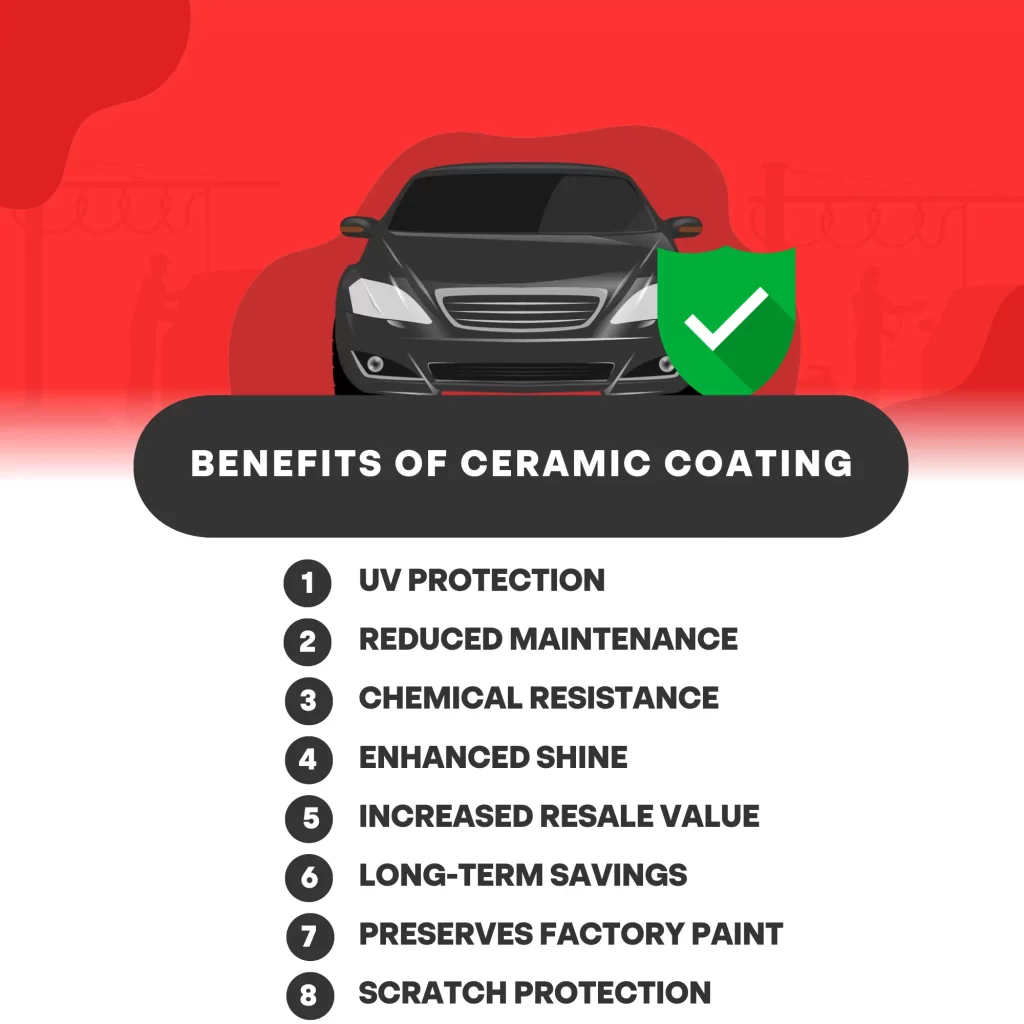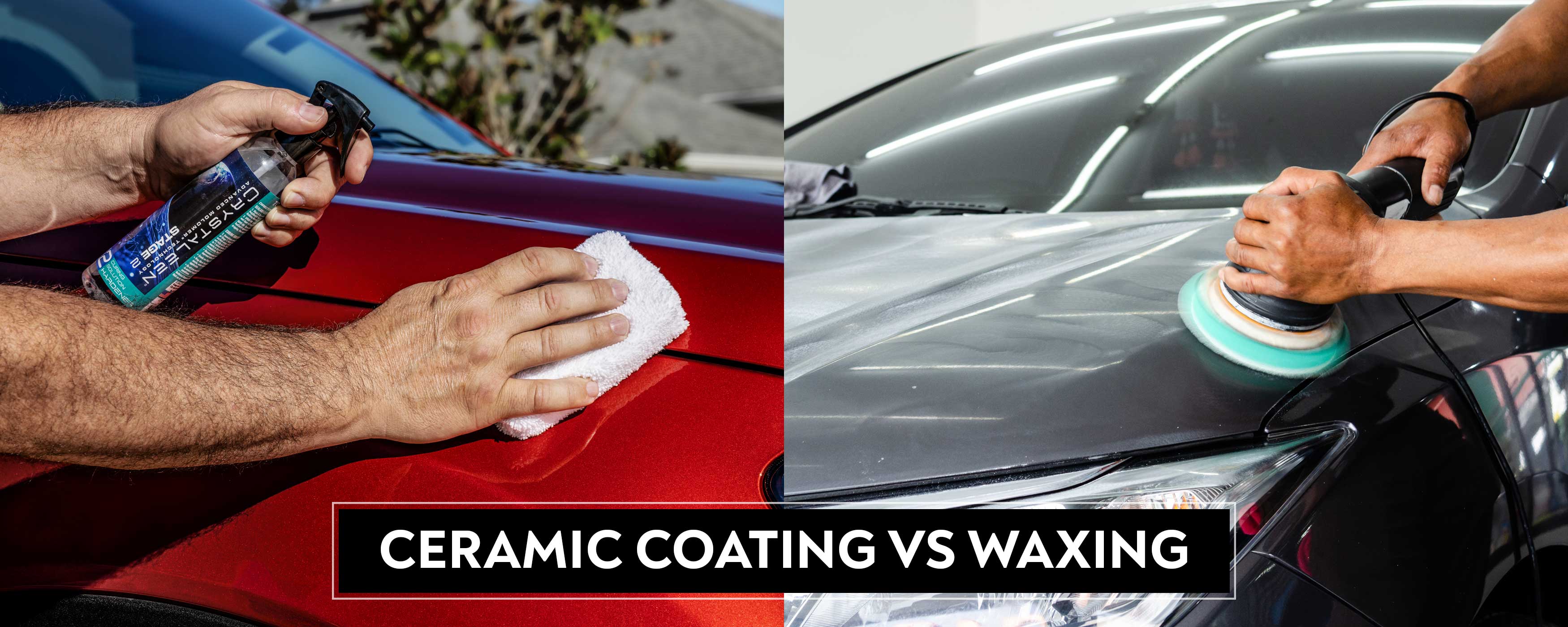Ceramic Finishing vs. Typical Wax: Which Supplies Much Better Long-Term Protection?
The debate in between ceramic finishes and typical wax for car defense has garnered substantial attention amongst automotive enthusiasts and professionals alike. While both serve the function of securing paint, their distinctions in durability, application, and long-term maintenance costs may influence a customer's selection. Ceramic finishes boast remarkable durability and resistance to ecological factors, yet the complexity of their application questions about accessibility and practicality. As we check out these contrasting alternatives, it comes to be vital to take into consideration not just the instant benefits yet also the effects for vehicle treatment in time.
Overview of Ceramic Finish
Ceramic coating has gotten significant popularity among automotive enthusiasts and detailers alike due to its advanced protective top qualities. This cutting-edge technology is created to develop a sturdy, hydrophobic shield over a car's paint surface, considerably enhancing its resistance to environmental impurities such as dust, UV rays, and chemical discolorations. Unlike traditional wax, which offers a temporary layer of security, ceramic finishings bond at a molecular level with the paint, providing lasting longevity-- commonly extending past 2 years with proper maintenance.
The application process entails precise preparation of the vehicle's surface, including cleansing and polishing to make certain optimal adhesion. As soon as applied, the layer cures to create a robust layer that not just adds deepness and gloss to the paint yet likewise simplifies upkeep. With its hydrophobic properties, ceramic covering enables water and dirt to slide off even more quickly, lowering the frequency of laundries and lessening the danger of swirl marks.
Additionally, ceramic coatings are readily available in different formulas, enabling individuals to pick products tailored to their certain needs and preferences. On the whole, ceramic finish represents a substantial improvement in paint protection technology, delivering exceptional performance contrasted to standard alternatives.
Introduction of Typical Wax
Commonly considered a staple in automotive treatment, wax serves as a popular selection for those seeking a straightforward approach to improve and safeguard their vehicle's paint - ceramic coating. Automotive wax typically consists of all-natural active ingredients, such as carnauba, or synthetic substances, created to create a protective layer on the surface of the paint. This layer not just improves the vehicle's gloss and beam but also gives a barrier versus environmental pollutants
The application of wax is generally user-friendly, making it easily accessible for both professionals and DIY fanatics. Once used, wax needs a curing duration, after which it sets to form a safety shell.
Nonetheless, while wax works for improving the visual allure of a vehicle, it is crucial to note that the protection it provides might require a lot more regular reapplication compared to alternate products, such as ceramic finishings. On the whole, traditional wax stays a preferred choice for those prioritizing ease of use and immediate visual improvement.
Resilience and Durability Contrast
While both ceramic finishes and conventional wax offer protective benefits for vehicle paint, their longevity and longevity differ considerably. Conventional wax, normally made from all-natural carnauba or synthetic polymers, typically provides a safety layer that lasts around three to six months. This relatively short lifespan demands normal reapplication to preserve ideal security.
In contrast, ceramic coverings are engineered from advanced nanotechnology, forming a covalent bond with the paint surface. This causes a durable, hydrophobic layer that can withstand for two to five years, relying on the item and ecological conditions. The exceptional resilience of ceramic coverings is associated to their chemical structure, which offers boosted resistance to scrapes, UV rays, and oxidation.

Security Against Environmental Variables
Safeguarding a lorry's paint from environmental variables is vital for maintaining its look and value gradually. Automobiles are continuously subjected to a variety of aspects, consisting of UV rays, bird droppings, tree sap, acid rain, and road grime, all of which can compromise the honesty of the paintwork.
Ceramic coatings give a robust protection versus these environmental assailants. Unlike standard wax, which can deteriorate promptly under UV exposure, ceramic finishes form a resilient, hydrophobic layer that stands up to the hazardous results of sunshine and environmental contaminants. This innovative technology creates a chemical bond with the automobile's surface area, offering exceptional security that lasts for many years, also in rough problems.
Typical wax, while easier to apply, usually needs regular reapplication and uses restricted resistance to impurities and UV rays. Gradually, it can damage down, leaving the paint prone to scrapes and oxidation. On the other hand, ceramic finishes keep their safety top qualities much longer, substantially lowering the risk of paint damage and guaranteeing that the automobile preserves its visual charm. As a result, ceramic finishings are progressively recognized as the superior choice for lasting defense against environmental variables.
Application and Maintenance Distinctions
The methods of application and succeeding upkeep for ceramic finishings and standard wax vary dramatically, affecting the total individual experience and see here now performance of each product. Ceramic layers require a more intricate application procedure, typically including surface area preparation that includes cleaning, sanitizing, and polishing the car. As soon as the surface area prepares, the ceramic finish is used in a controlled atmosphere, usually needing professional expertise to guarantee appropriate healing and bonding to the paint.

While both items improve vehicle appearance, the longer-lasting security used by ceramic about his finishes might warrant their first investment, despite the more demanding application process. On the other hand, typical wax remains a prominent selection for those looking for a less complex, albeit temporary, remedy.

Conclusion
To conclude, ceramic finishes show considerable advantages over standard wax in terms of sturdiness and environmental security. With a life expectancy prolonging two to five years and exceptional resistance to UV rays, dirt, and chemical spots, ceramic finishes supply a more efficient option for long-term automobile maintenance. Although the application procedure might require professional experience, the resulting cost savings and lowered regularity of reapplication highlight the value of ceramic layers for those looking for ideal vehicle security.
The debate in between ceramic finishings and conventional wax for lorry security has actually gathered significant focus amongst automobile enthusiasts and specialists alike. Unlike conventional wax, which gives a short-lived layer of protection, ceramic layers bond at a molecular degree with the paint, providing durable toughness-- frequently expanding beyond two years with appropriate upkeep.
While both ceramic finishings and typical wax offer protective benefits for auto paint, their sturdiness and longevity differ significantly. For automobile fanatics seeking long-lasting defense, ceramic layers present a compelling benefit over traditional wax products.
In final thought, ceramic finishes demonstrate substantial benefits over traditional wax in terms of resilience and environmental security.
Comments on “Is Ceramic Coating Worth the Investment for Your Car’s Exterior?”